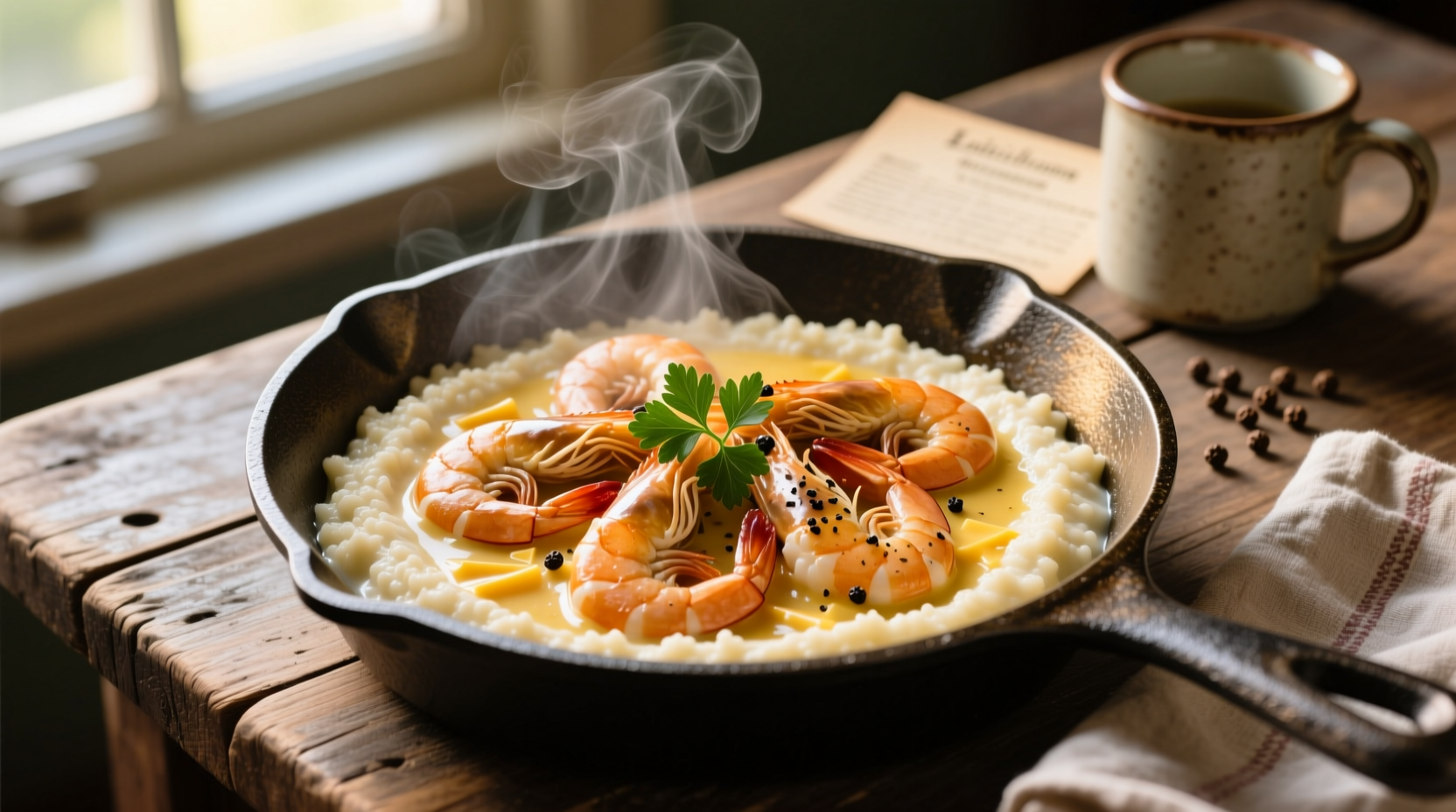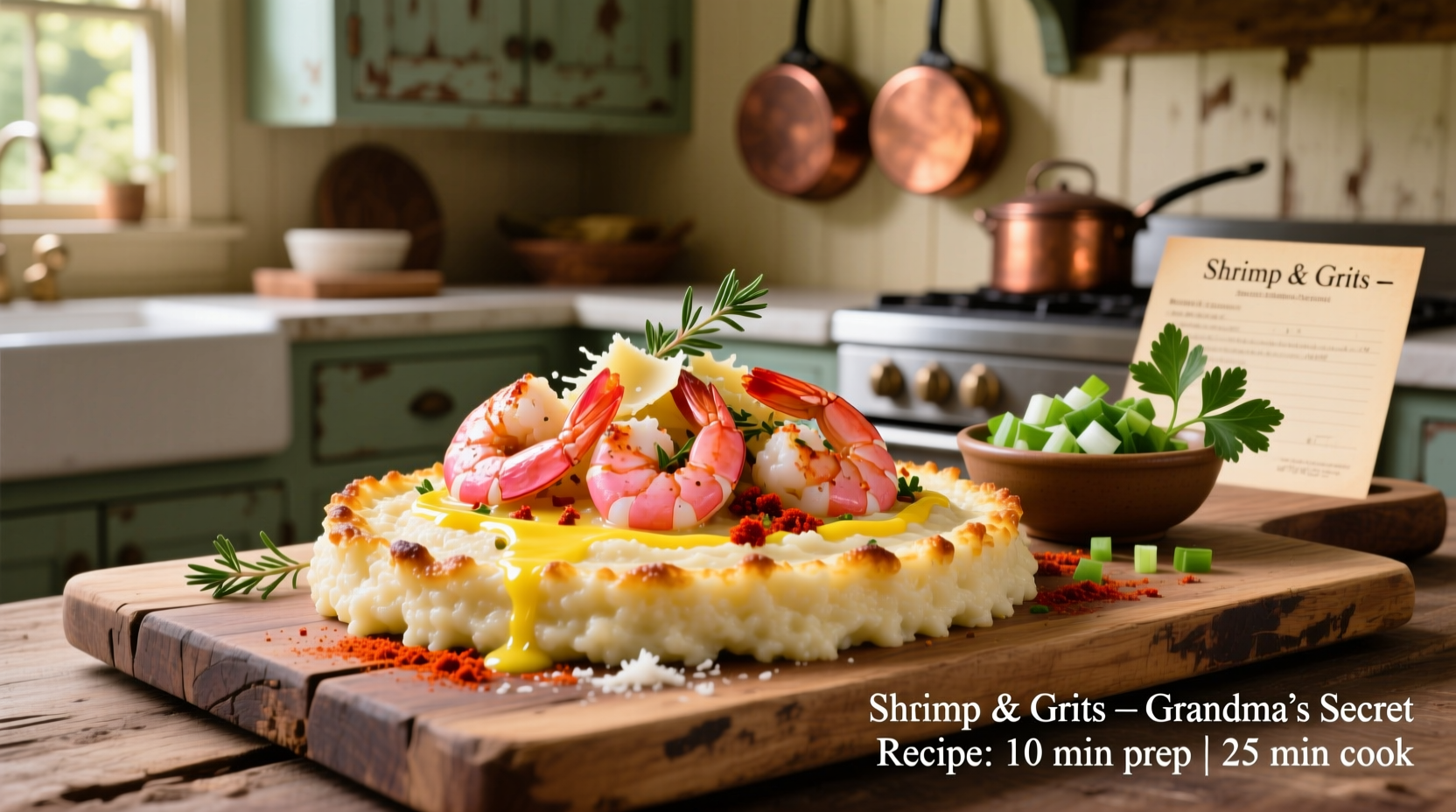Master authentic shrimp and grits in 45 minutes with this foolproof guide. You'll learn the proper technique for creamy stone-ground grits, how to perfectly sear shrimp without overcooking, and create a balanced Cajun-spiced gravy that elevates this Southern classic from humble breakfast to gourmet dinner. Includes professional chef tips for avoiding common mistakes like watery grits or rubbery shrimp.
Shrimp and grits transforms simple ingredients into a soul-satisfying meal that's earned its place as a Southern staple. This iconic dish combines creamy stone-ground grits with plump shrimp in a rich, spicy gravy—originally a fisherman's breakfast that's now celebrated in fine dining establishments across the American South. Follow this comprehensive guide to create restaurant-quality shrimp and grits that honors the dish's heritage while delivering maximum flavor in your home kitchen.
The Evolution of Shrimp and Grits: From Humble Origins to Culinary Star
What began as a practical breakfast for coastal Carolina fishermen has evolved into a celebrated Southern delicacy. According to the Southern Foodways Alliance, shrimp and grits emerged in the late 19th century when Gullah fishermen would cook their catch with readily available grits. The dish gained wider recognition in the 1980s when chef Bill Neal introduced it to upscale Charleston restaurants, transforming it from working-class fare to a menu highlight nationwide. Today, regional variations reflect local preferences while maintaining the essential components that define this beloved dish.
| Era | Preparation Style | Cultural Significance |
|---|---|---|
| Late 1800s | Simple preparation with bacon grease, shrimp, and grits | Working-class breakfast for coastal fishermen |
| 1970s-1980s | Added spices and regional variations | Transition to restaurant menus across the South |
| 2000s-Present | Gourmet interpretations with diverse ingredients | National recognition as a Southern culinary icon |
Essential Ingredients for Authentic Shrimp and Grits
The magic of shrimp and grits lies in quality ingredients properly executed. Skip the instant grits—true Southern versions require stone-ground grits for their distinctive texture and corn flavor. For the shrimp, medium to large (26/30 count) wild-caught shrimp provide the perfect balance of size and flavor. Andouille sausage adds authentic smokiness, though bacon makes an acceptable substitute when unavailable.
When selecting shrimp, the USDA recommends choosing those with firm, translucent flesh and a mild ocean scent—avoid any with ammonia odors which indicate spoilage. Proper storage at 40°F or below maintains freshness until preparation. Always thaw frozen shrimp in the refrigerator overnight rather than at room temperature to prevent bacterial growth.
Equipment Checklist for Success
- Medium heavy-bottomed saucepan (for grits)
- Large cast-iron skillet (ideal for shrimp)
- Whisk (prevents grits from clumping)
- Wooden spoon (gentle on grits)
- Instant-read thermometer (critical for shrimp)
Step-by-Step Cooking Process
Preparing Perfect Stone-Ground Grits
Stone-ground grits require patience but deliver unmatched flavor. Combine 1 cup grits with 4 cups liquid (chicken broth for richness) in a saucepan. Bring to a gentle boil while whisking, then reduce to the lowest possible simmer. Cover and cook for 35-45 minutes, stirring every 10 minutes. The grits are done when they pull away from the pan sides and have a creamy but textured consistency. Stir in 2 tablespoons butter and ¼ cup grated sharp cheddar for authentic Southern flavor.
Crafting the Flavor Foundation
Render 4 slices of thick-cut bacon or ½ pound andouille sausage in your skillet over medium heat until crisp. Remove the protein, leaving 2 tablespoons of fat. Add 1 diced shallot and 2 minced garlic cloves, sautéing until fragrant (about 2 minutes). Deglaze with ¼ cup chicken broth, scraping up browned bits for maximum flavor.
Perfectly Cooked Shrimp Every Time
This is where most home cooks fail—overcooked shrimp ruins the dish. Pat 1 pound shrimp dry and season with 1 teaspoon Cajun seasoning. Sauté in the flavorful base for 1-2 minutes per side until they reach 120°F internally. Crucial tip: Remove shrimp when they're slightly underdone as they'll continue cooking off-heat. Overcooked shrimp become tough and rubbery—aim for a loose "C" shape rather than tight "O".

Avoiding Common Pitfalls
Many shrimp and grits attempts fail due to these preventable mistakes:
- Watery grits: Stone-ground grits need proper hydration ratio (4:1 liquid to grits) and sufficient cooking time
- Bland flavor: Underseasoning at each stage—season grits, sauce, and shrimp separately
- Rubbery shrimp: Overcooking by even 30 seconds changes texture dramatically
- Separated sauce: Adding cold dairy to hot grits causes curdling—temper with hot grits first
Serving Suggestions and Variations
Serve immediately while hot, with grits as the base and shrimp arranged on top, spooning the flavorful sauce over everything. Garnish with sliced green onions and a dash of hot sauce. For brunch service, a poached egg adds richness. Vegetarian adaptations work well with mushrooms instead of shrimp, though traditionalists would argue it's no longer "shrimp and grits" but rather "mushrooms and grits"—a different dish entirely.
Regional Style Comparison
Understanding regional differences helps you create authentic versions:
- Lowcountry (Carolina): Simpler preparation with bacon, minimal spices, often served as breakfast
- New Orleans: Richer sauce with andouille, Creole spices, and sometimes a splash of whiskey
- Modern Gourmet: Incorporates ingredients like truffle oil or smoked gouda for upscale presentations
Storage and Reheating Guidelines
While best served fresh, leftovers can be stored in airtight containers for up to 2 days. Reheat grits with additional liquid (broth or milk) to restore creaminess, stirring constantly over low heat. Shrimp should be reheated separately to prevent overcooking—microwave briefly or warm in the sauce just until heated through. Never reheat the complete dish in a microwave as it ruins the shrimp's delicate texture.











 浙公网安备
33010002000092号
浙公网安备
33010002000092号 浙B2-20120091-4
浙B2-20120091-4